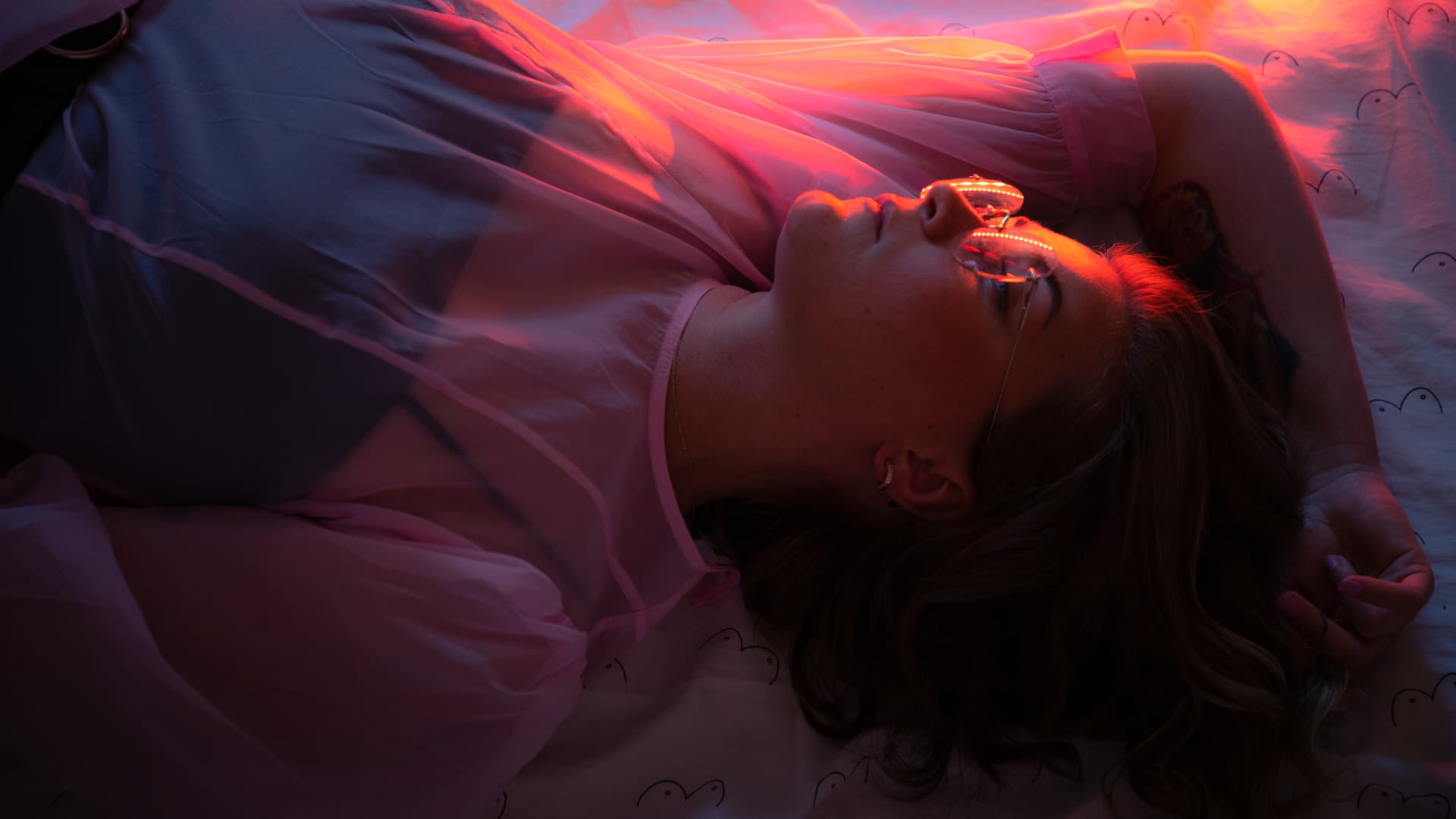
Prophetic AI
Courtesy: Prophetic AI
When Eric Wollberg and Wesley Berry met in March, Wollberg was chasing the idea of using lucid dreams to explore consciousness and Berry was working with the musician Grimes on translating neural signals into art. Both were fascinated by how brain-imaging tools could help paint a picture of someone’s thought patterns.
The two, ages 29 and 27, respectively, co-founded Prophetic that same month. It’s a tech startup building what the company calls the “world’s first wearable device for stabilizing lucid dreams.” It’s a headband-like device that issues focused ultrasound signals.
Lucid dreams occur when a person sleeping becomes aware they’re dreaming and may be able to control parts of the dream.
The startup has raised a previously unreported $1.1 million funding round with participation from a16z’s Scout Fund, and led by BoxGroup, the VC fund known for being first to invest in fintech company Plaid. To prototype the noninvasive device, dubbed the “Halo,” Prophetic has partnered with Card79 — the same company that designed and built hardware for Elon Musk’s brain-computer interface company, Neuralink.
Prophetic’s hardware bet comes at a time when a handful of artificial intelligence companies are investing in devices or wearables. Humane AI, a company founded in 2017 by former Apple employees, debuted its wearable — the AI Pin — on the runway last week at Paris Fashion Week. And famed iPhone designer Jony Ive and OpenAI’s Sam Altman are also reportedly discussing an AI hardware project.
Wollberg and Berry, Prophetic’s CEO and chief technology officer, respectively, plan to showcase a semi-working prototype either later this month or in early November. But the full test of the prototype, they say, will have to wait until the third or fourth quarter of 2024, after the conclusion of a yearlong study on brain imaging conducted in partnership with the Donders Institute for Brain, Cognition and Behaviour, part of Radboud University in the Netherlands.
The co-founders have the type of lofty dreams typical of a modern-era tech startup, with Wollberg comparing the company to OpenAI. Its mission is to work “collectively towards understanding the nature of consciousness” and its LinkedIn page reads, “Prometheus stole fire from the gods, we will steal dreams from the prophets.”
But a year out from a fully working prototype, with plans to ship devices starting in spring 2025, Prophetic is still a ways away from delivering on its promises.
Lucid dreaming through a headset
Lucid dreaming has fascinated the public and the neuroscience community alike for decades, spawning references across pop culture, from films like “The Matrix” and “Inception,” to a Reddit community (r/LucidDreaming) with more than 500,000 members. Neuroscientific studies on the subject date back to the 1970s, according to research published in the National Library of Medicine, but interest has increased with the expansion of the cognitive neuroscience field.
Wollberg had his first lucid dream at age 12, and though he doesn’t remember exactly what he did, he called it “just about the most profound experience I’ve ever had.” In college, he started lucid dreaming twice a week and realized he wanted to create a way to use the practice to explore consciousness on a deeper level.
Meanwhile, co-founder Berry had a background in neurotech prototyping — specifically, feeding electroencephalogram, or EEG, data into a transformer neural network, an AI model pioneered by Google, to explore what people may be seeing in their minds. That’s the kind of work he had been doing with Grimes.
“Eric came to me and he told me what he was working on, and I didn’t think the technology was there at that time — we can’t induce dreams, let alone lucid ones, so how could this be possible?” Berry told CNBC. “The defining moment for me was when I realized that you’re not inducing the dream state itself — someone is already dreaming normally, which happens for most people multiple times a week. You’re simply activating the prefrontal cortex, and it turns lucid.”
Wollberg and Berry are counting on the results of the Donders Institute’s yearlong study to provide enough training data for their AI to work on the Halo device. The golden-ticket type of brain data they’re looking for via the study is gamma frequencies — the fastest measurable “band” of brain wave frequencies, which occur in states of deep focus and are a hallmark of an active prefrontal cortex, which is believed to be a defining characteristic of lucid dreams.
While today’s leading transformer models that underpin tools like OpenAI’s ChatGPT deal in inputs and outputs of text, Berry is aiming to do something differently with Prophetic. His plan is to use a convolutional neural net to decode brain-imaging data into “tokens,” then feed those into the transformer model in a way it can understand them.
“You can create this closed loop where the model is learning and figuring out what sort of sequences of brain states need to occur, what sort of sequences of neuro-stimulation need to occur, in order to maximize the activation of the prefrontal cortex,” Berry said.
Prophetic’s goal with the prototype is to use focused ultrasounds to stimulate the user’s prefrontal cortexes while dreaming. Research suggests that focused ultrasound stimulation can improve working memory, and Berry compares that, in a way, to the idea of not knowing how you got somewhere while dreaming. It’s part of why he believes there’s a “really, really, really good shot that this works.”
“My conviction strongly comes from how it feels like a quantum leap … when you’re using this focused ultrasound,” Berry said. “It’s quite a bit better than everything else that’s been done.”




